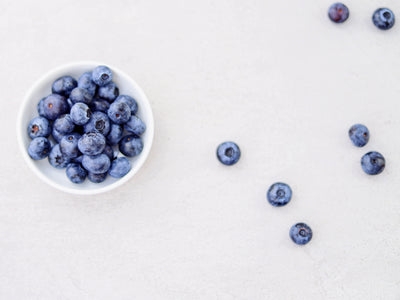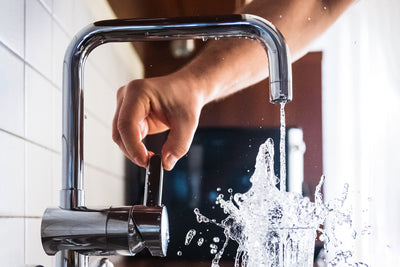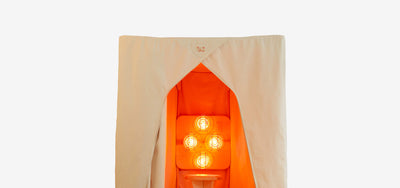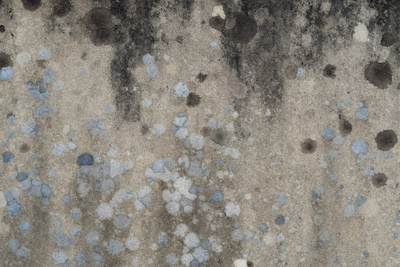Why pets enhance wellbeing

...and 6 ways to be a more conscious pet carer
From tabby cats to tufty terriers, house rabbits to Siberian hamsters, there are an estimated 34 million pets in the UK.
Their unconditional love, constant companionship and unwavering trust earn them prime spots on our sofas and space in our hearts. And while many of the 3.2m who joined the pet-owning party over lockdown have found it challenging, a massive 74% said[1] their pet had helped their mental health – lightening loneliness and lessening anxiety.
It’s clear that the bond between pet and person runs deep, but can animal ownership bring real, measurable health benefits? And can we be more conscious and caring in our pet parenting, both for our pets’ wellbeing and that of the planet?
The healing power of pets

The health benefits of owning a pet are plentiful – and proven by science. Studies show that pet-owners exercise more,[2] make fewer visits to the doctor,[3] feel less anxious[4] and sleep more soundly[5] than their critter-less counterparts. Stroking your furry friend can also lower your heart rate (and theirs).[6]
From grooming your horse’s coat to caressing your cat’s ears, touch is a powerful trigger of the ‘love hormone’ oxytocin in both animals and humans. Famous for its ability to foster a warm and fuzzy feeling, oxytocin can calm breathing, lower blood pressure and inhibit the production of stress hormones. And, if you gaze into your pets’ eyes, studies show that your oxytocin levels could increase[7] even further, cementing your bond and building mutual affection.
"Studies show that pet-owners exercise more, make fewer visits to the doctor, feel less anxious and sleep more soundly than their critter-less counterparts."
Man's best friend
 But the benefits don’t end there – especially if you’re a dog owner. Remarkably, according to recent research by the American Heart Association,[8] if you have a dog, you’re more likely to survive a stroke or heart attack.
But the benefits don’t end there – especially if you’re a dog owner. Remarkably, according to recent research by the American Heart Association,[8] if you have a dog, you’re more likely to survive a stroke or heart attack.
Plus, scientists believe[9] that by wandering the wilderness and bringing new microbes back into our homes, dogs (and free-roaming cats) can strengthen our immune systems, lower our tendency to develop allergies and increase the variety of good bacteria in our guts. A 2015 study[10] supported this, finding that children who are exposed to dogs or farm animals from a young age have a 52% lower risk of asthma.
Other conditions have also been found to benefit from interaction with animals. In a classroom-based, animal-assisted study,[11] children with autism showed a 54% increase in social behaviour and a 43% reduction in anxious activity, while veterans with PTSD demonstrated 30% less depression[12] after spending time with a therapy dog.
Heart-warmingly, science shows[13] that even the simple presence of a pet can cause a surge in positive emotions, smiling and laughing.
"children who are exposed to dogs or farm animals from a young age have a 52% lower risk of asthma."
How to be a more conscious pet carer
Now we know just how much our animals can do for us, let’s take a look at how we can return the favour, and become better, more conscious pet parents.
1. Avoid exposure to household chemicals

Just like us, the animals we share our homes with are sensitive to synthetic chemicals.
If we bombard our pets' systems with toxic fumes from paints, pesticides, new carpets, fire retardants, smoke and cleaning products, they can reach overload – sometimes leading to sickness or disease.
“It often takes decades for chemical-related diseases to manifest in people,” says[14] Catherine Wise, a Ph.D. candidate at North Carolina State University. “But the impact on pets may only take several years.”
In a new study[15] using silicone wristbands and collars, Wise and a team of scientists found that dogs and humans carry remarkably similar amounts of common toxic household chemicals in their bodies. For example, a type of polychlorinated biphenyl (PCB) – once widely used as electronic coolant fluid and in a range of industrial processes before the government banned their use – showed up in 87% of human wristbands and 97% of dog tags.
“It often takes decades for chemical-related diseases to manifest in people,” says Catherine Wise, a Ph.D. candidate at North Carolina State University. “But the impact on pets may only take several years.”
In 2019, another study[16] found a link between flame retardants and a disease in cats called feline hyperthyroidism – possibly due to the way cats like to rest on upholstered furniture, which is often treated with flame retardants. A few years before, another research paper[17] found a correlation between dogs’ exposure to lawn herbicides and developing bladder cancer.
The solution? Wherever possible, choose natural, non-toxic materials, cleaning products and furnishings. Bring in breathable, eco-and-air-friendly finishes, like water-based, VOC-free paints and natural clay plaster. Untreated, solid wood is another great option for flooring and furniture, while organic fabrics make healthy soft furnishings.
Always safely store toxic chemicals like solvents and pesticides well out of reach of any animals, and, if possible, avoid using them at home – where they can disrupt and affect local wildlife, people and insects.
Another idea would be to use an air filter. Proven to clear the air of toxic gases and chemicals, viruses, bacteria and allergens in a single air pass, Radic8 filters come with an in-built reactor chamber, capable of destroying microorganisms at a molecular level using UV light from ozone-free ultraviolet bulbs. Discover the full Radic8 range here.
2. Pick pet-safe plants

While most plants will cause no more than an upset stomach if your pet sneaks a nibble, some are best avoided.
Lilies, for example, are highly toxic to cats. “If your cat eats any part of a lily plant, they are at risk of kidney failure and should see a vet immediately,” says animal charity PDSA. “Sadly, left untreated, lily poisoning is usually fatal.” To be safe, don’t have lilies in your house or garden if you own a cat, and check for and remove lilies from any bouquets before bringing them inside.
And if you’re a pooch parent? Keep a beady eye out for acorns, according to the Kennel Club. “A one-off feast of acorns is likely to cause vomiting and diarrhoea,” they say, while “eating acorns regularly may cause kidney or liver problems.”
If you’re partial to a bit of indoor greenery, guarantee safety by sticking to pet-friendly house plant varieties. A few great choices are the Chinese money plant, the Kentia palm and the Boston fern. Or, keep your foliage out of reach of prying paws. Try suspending hanging pots from the ceiling or placing plants on high shelves.
"If you’re partial to a bit of indoor greenery, guarantee safety by sticking to pet-friendly house plant varieties."
While wonderfully uplifting to our noses, both dogs and cats generally dislike the smell of citrus – meaning any lemon, lime or orange-scented plants you have in your home should be of no interest to your pets.
3. Opt for sustainable supplies

With a little research, it’s surprisingly easy to source products that are kind to both your pet and the planet.
Brands like Beco look to the latest technology to get the best from nature and minimise the environmental impact of manufacturing. From their durable bamboo bowls (dyed using natural food dyes only) to their hemp rope and natural rubber toys, Beco have a range of ethical, long-lasting accessories to keep your pet happy.
Tackling the problem of pollution head-on, pioneering British business Project Blu converts ocean-bound plastic, discarded fishing nets and waste textiles into premium quality, sustainable beds, collars and leads that are built to last.
"Project Blu converts ocean-bound plastic into premium quality, sustainable beds, collars and leads that are built to last."
4. Feed them the healthiest food you can afford

Unsurprisingly, “you are what you eat” doesn’t only apply to humans.
What your pet consumes has a direct impact on every aspect of its wellbeing. From skin conditions to digestive issues, a poor diet can lead to all sorts of health problems.
We believe a raw, 100% natural diet is the best option for optimally healthy cats and dogs.
James Middleton, who founded freeze-dried raw dog food company Ella & Co, agrees. “I began by researching the kibble they [my dogs] ate,” he writes, “and was horrified to learn that what little fresh ingredients were being used were heated to the point where almost all the flavour and nutritional value was getting lost.
“This discovery led me to raw feeding which had an immediate effect on their physical health. All of a sudden, their eyes were brighter, the coats were glossier and all of their tummy troubles cleared up.”
Dogs share 99% of their DNA with wolves. As carnivores, wolves hunt large mammals like deer or bison and smaller mammals such as rodents and hares, with adult wolves eating up to 20 pounds of raw meat in a single meal. Similarly, in the wild, cats also eat their prey raw and whole.
Following a raw diet means feeding your pet raw meat, bones, and offal to mimic what they would find in the wild.
People who feed their pets raw food often report[18] the following benefits:
- Better dental health
- Improved weight control
- Improved digestion
- Reduced poop quantity and stool odour
- Healthier coat and less shedding
- Increased mobility
- Reduced allergy symptoms (e.g. itchy skin) and intolerances
- Fewer visits to the vet
We (and our pets!) like Nutriment’s award-winning raw cat and dog food. If you’re looking for an organic option, try their Laverstoke Farm range.
"Following a raw diet means feeding your pet raw meat, bones, and offal to mimic what they would find in the wild."
Of course, sometimes budgets don’t stretch to a fully raw diet. Or perhaps you have other, perfectly valid reasons for preferring a dry diet. Whatever food you choose for your furry companion, try to aim for as minimally processed, natural, high-quality, protein-rich options as you can afford. Freeze-dried raw snacks are a good way to introduce some raw food into their days without having to invest in a fridge full.
And take a moment to scrutinise the ingredients label. Vet Susan Wynn[19] has a handy rule of thumb when checking the contents of pet food:
“I like to see whole, real ingredients that anyone could recognise—meats or organs (sometimes called by-products), vegetables and fruits, complex carbohydrates—in the first two to three lines of the ingredient listing. I do not like to see fruits and vegetables following the vitamins and minerals. That means that hardly any fruits and vegetables are actually contained in the product.”
Usually, you’ll be able to tell from your pets’ eyes, coat, skin, poop and teeth whether the diet they’re on is working for them. If it isn’t, switch it up, make some tweaks – until you find the perfect feed for them.
5. Choose natural pet care products

To clean muddy paws and mucky coats, always opt for natural formulas free from harsh chemicals.
Just like their human range, Faith in Nature make their pooch care products with all-natural essential oils. As well as being PH balanced for dogs, their shampoos are vegan, 100% biodegradable, and cruelty-free.
Other non-toxic pet-pampering options include AllPaws Wild Mint Cleansing Dog Shampoo. Organic and naturally-scented, this fur-refreshing formula is SLS-free and comes in fully recyclable, renewable sugarcane packaging. Or there’s Earthbath’s ultra-gentle, fragrance-free Oatmeal & Aloe Dog Shampoo, which contains precisely nothing that could harm you, your pet or the planet.
6. Try a little infrared therapy
Did you know that pets get the same healing and detoxing benefits from near-infrared light and heat as humans do?
SaunaSpace – the company that crafts our favourite near-infrared devices – receives countless reviews from customers whose four-legged friends love nothing more than to bask in the glow of their infrared saunas and red light therapy lamp.
Near-infrared light and heat is a natural and safe therapy to soothe your pets, relaxing and detoxifying them on a deep, cellular level.
Shop SaunaSpace near infrared saunas and the SaunaSpace Photon therapy lamp here.

Boo Boo the mini Golden doodle living his best dog life with the Photon Lamp (Image from @saunaspace Instagram)

Lucy the cat chilling out in the sauna (Image from @saunaspace Instagram)
Interested in which supplements and herbs could benefit your pet? Find out in our upcoming article...
References
[1] https://www.bbc.co.uk/news/business-56362987
[2] https://journals.sagepub.com/doi/abs/10.1177/089801019701500404
[3] https://www.econstor.eu/obitstream/10419/66146/3/Headey_2007_Pets-Human-Health.pdf
[4] https://journals.sagepub.com/doi/abs/10.1177/089801019701500404
[5] https://link.springer.com/article/10.1007/s11205-007-9142-2
[6] https://www.tandfonline.com/doi/abs/10.2752/175303711X13045914865385
[7] https://pubmed.ncbi.nlm.nih.gov/19124024/
[8] https://www.ahajournals.org/doi/10.1161/CIRCOUTCOMES.118.005342
[9] https://www.science.org/news/2015/08/what-microbes-your-home-say-about-you
[10] https://jamanetwork.com/journals/jamapediatrics/fullarticle/2467334?resultClick=3
[11] https://vet.purdue.edu/chab/ohaire/autism.php
[12] https://vet.purdue.edu/chab/ohaire/PTSD.php
[13] https://vet.purdue.edu/chab/ohaire/HAI.php
[14] https://www.nationalgeographic.com/animals/article/dogs-early-warning-systems-toxic-chemical-exposure
[15] https://pubs.acs.org/doi/10.1021/acs.est.9b06605
[16] https://pubs.acs.org/doi/10.1021/acs.est.9b02226
[17] https://pubmed.ncbi.nlm.nih.gov/23584031/
[18] https://www.nutriment.co.uk/community-results
[19] https://goop.com/gb-en/wellness/parenthood/a-veterinarians-guide-to-the-healthiest-pet-foods/







































